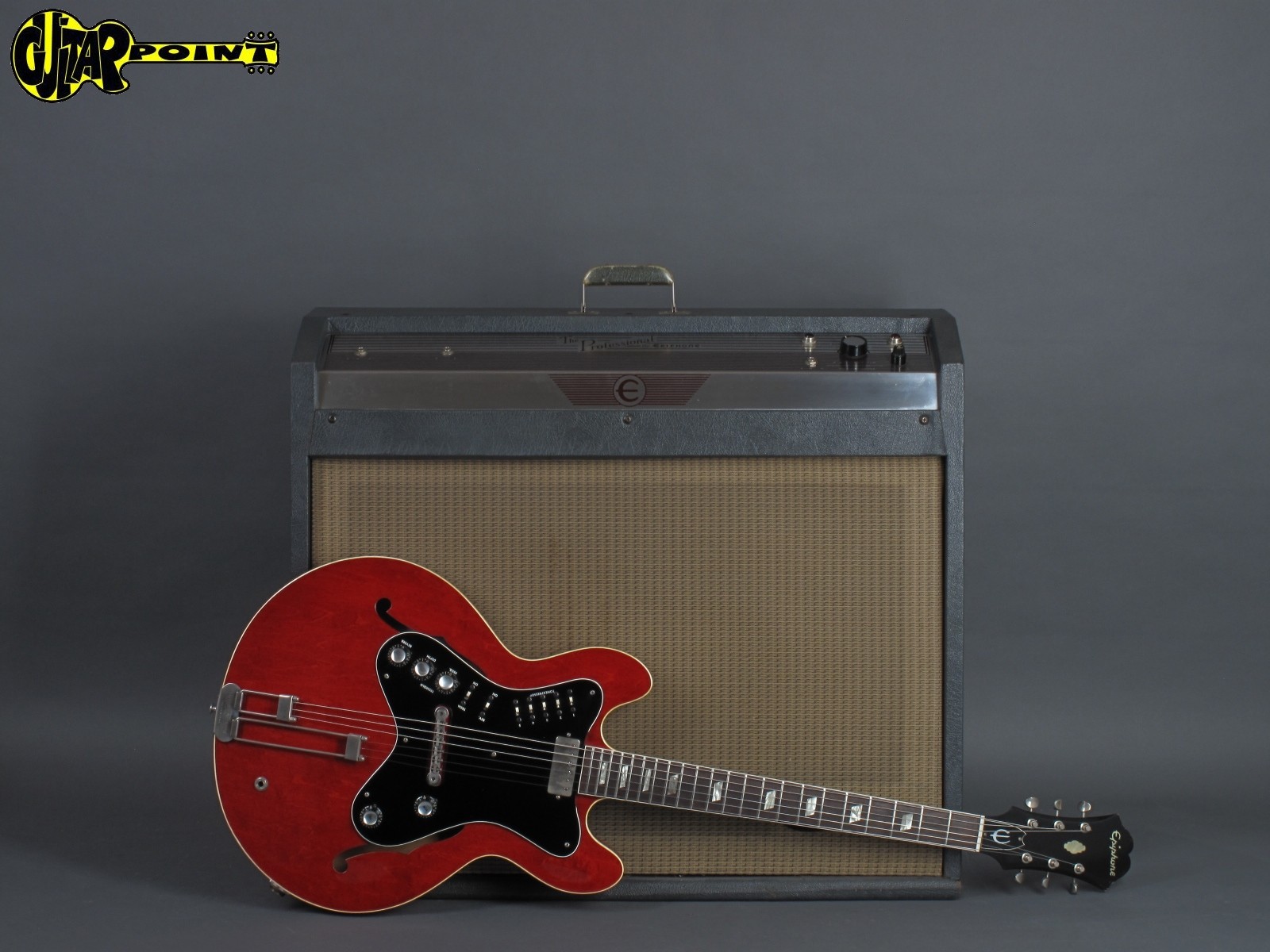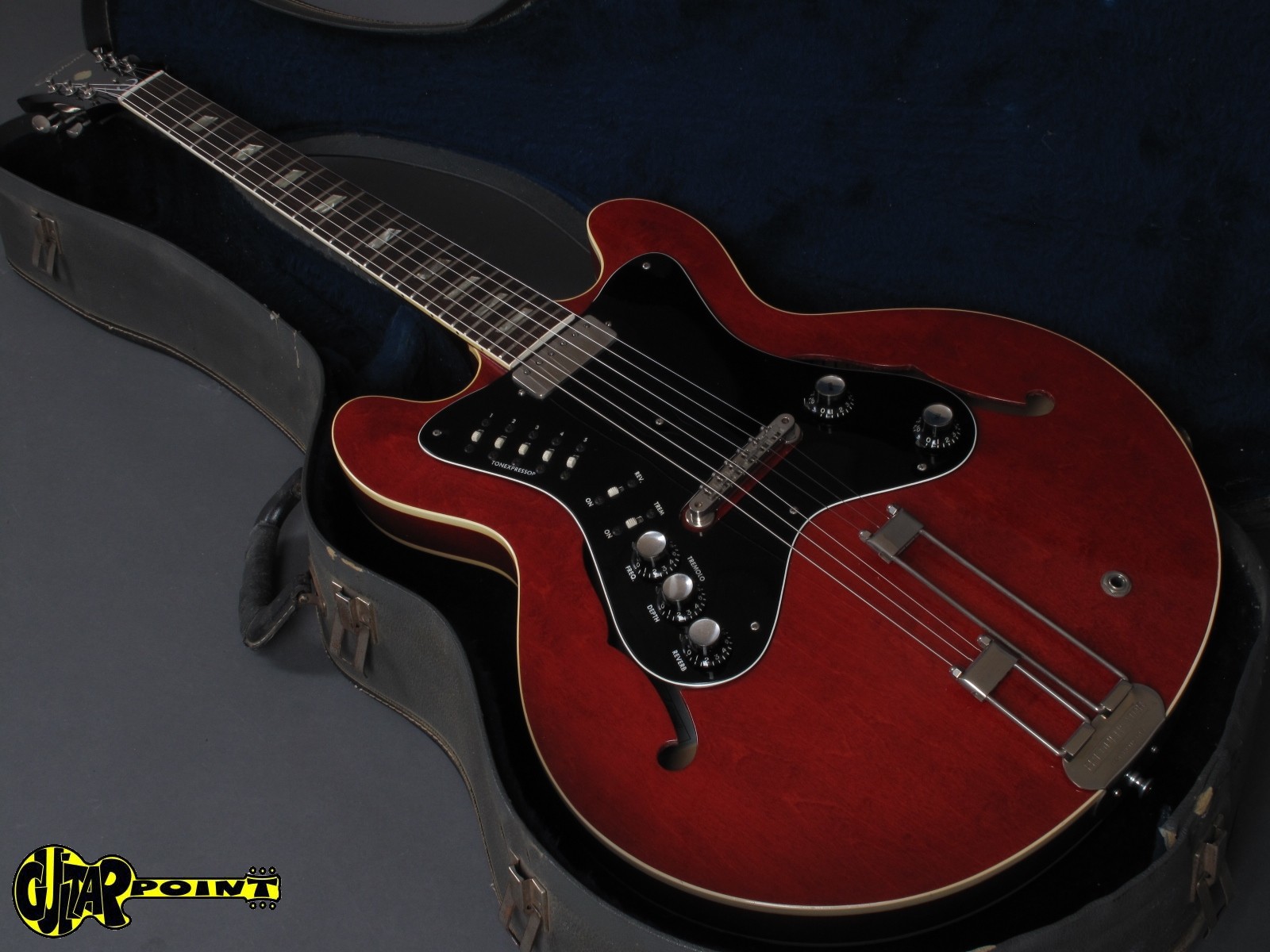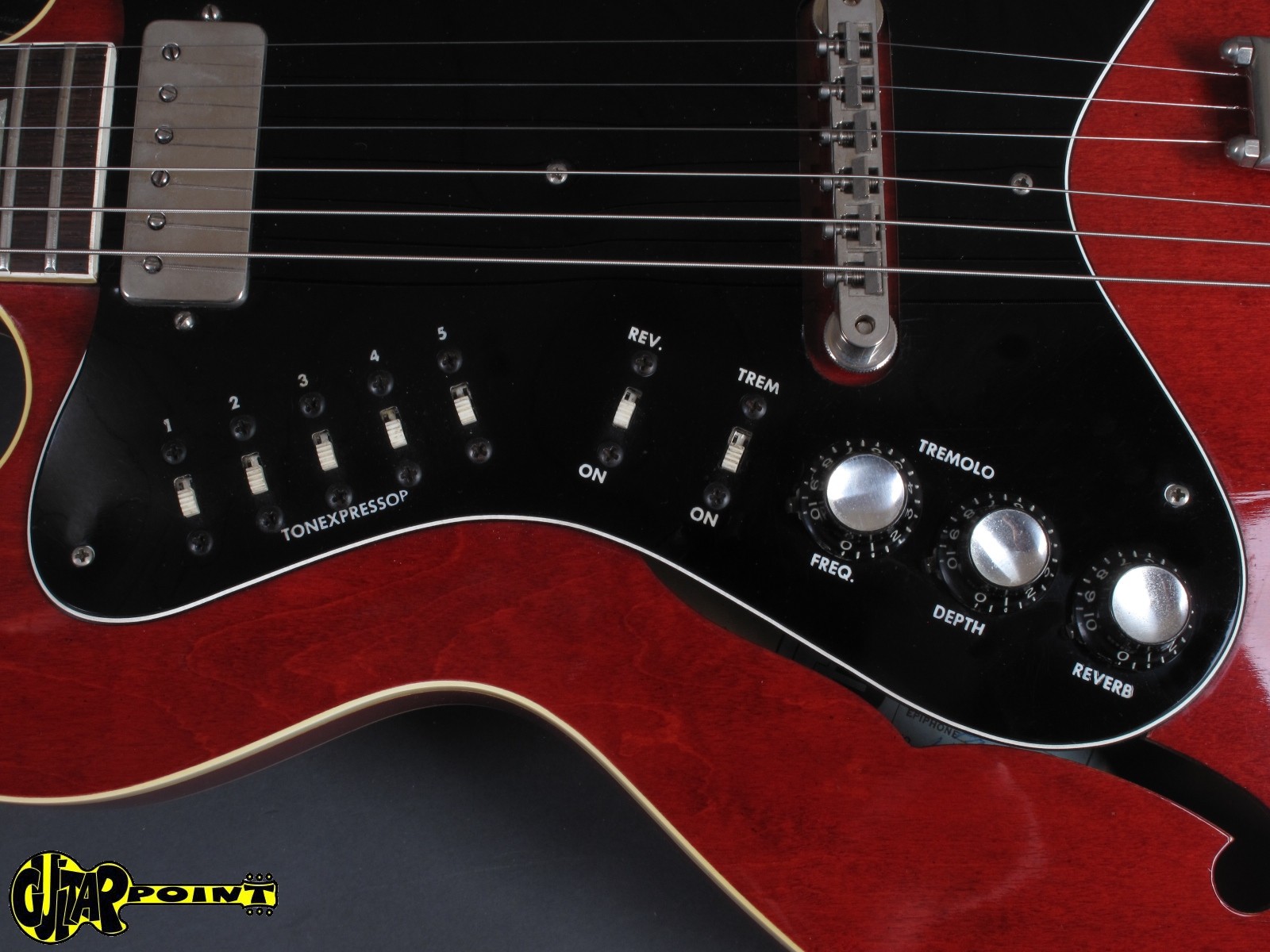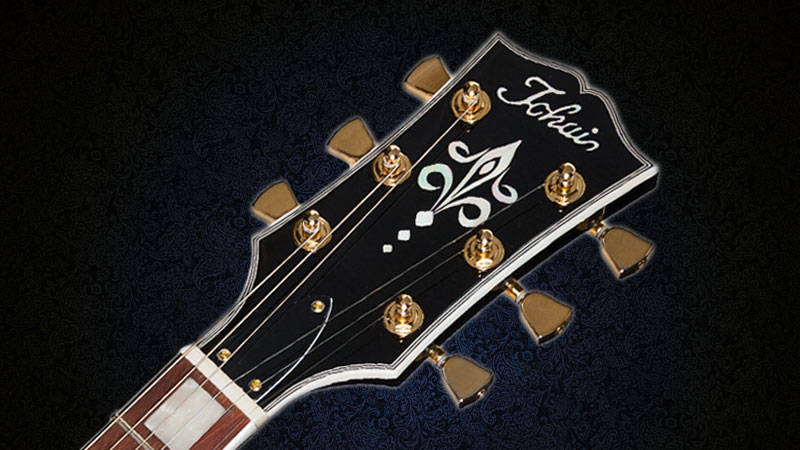The legendary Epiphone Guitars history
In this article we will give you a tour of the Epiphone story. We are mainly concerned with the time when Epiphones were still being built in the US. If you want to learn more about the differences between Gibson and Epiphone guitars, click here.
And now: Have fun with the history of the legendary Epiphone guitars!
Epiphone, Inc . – Naming and Early History
Contrary to what you might think, Epiphone is not one of the newer companies. In fact, quite the opposite! The history of the (current) Gibson subsidiary goes back to the 19th century. Allegedly, the Epiphone founding father Anastasios Stathopoulo began to build various stringed instruments as early as 1873. Back then, however, no guitars, but lutes, violins and traditional Greek instruments.
In 1903 Anastasios emigrated to the USA with his family. And there, too, he continued to build instruments, especially mandolins. After Anastasios ‘death in 1915, his eldest son, Epaminondas (called Epi), took over the management of the company that was already running well at the time.
As the interest in mandolins decreased significantly during and after the First World War, Epi soon expanded the company’s range to include banjos. In order to keep the business going, a new name for the banjos was also needed. The previous name „The House of Stathopoulo“ reminded the Americans too strongly of the supposedly ancient mandolins of the prewar period. To solve this problem, Epaminondas quickly combined his own nickname, Epi, and the Greek word for sound: φωνή (phōnḗ). And this name alone on the banjo headstocks contributed greatly to the success of the new models. Therefore, in 1928, Epi even changed the company’s official name to „Epiphone Banjo Company“.
First Epiphone guitars
In 1928, Epiphone also introduced their first acoustic guitars. The five models in the “Recording Series” were characterized above all by their unusual body.
Actually, the guitars were just a tactical step by Epi to keep up with what he believed to be the greatest competitor of the time, Gibson. In addition, there was a strong trend towards the guitar and away from the banjo in the late twenties.
However, the expected success of the Epiphone acoustic guitars initially failed to materialize. The first recording models could not keep up with the standard of the time, the Gibson L-4 and L-5. That was mainly because the guitars were just too quiet. Up until the 1950s, the electrical amplification of guitars was a big problem, which is why guitarists relied on very loud acoustic instruments. And the 16 “models from Gibson were better suited for this than the comparatively small Epiphone acoustic guitars.
That is why Epiphone announced their Masterbilt series in 1931, which was obviously heavily based on the popular Gibson models of the time. At that time, the Masterbilt series contained a total of 12 models, all with F-holes.

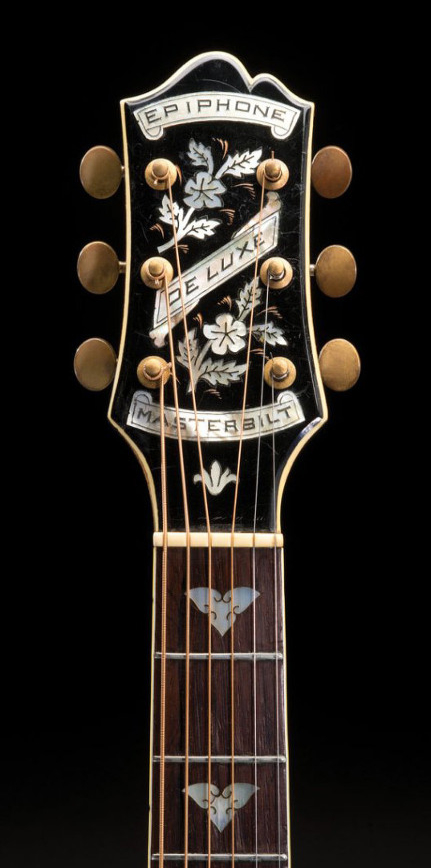

Even then, Epiphone scored with extremely low prices. The smallest Masterbilt model was available for as little as $ 35 (today about $ 560 / € 450). The largest guitar in the Masterbilt range cost $ 275 at the time (around $ 4430 today). By comparison, the Gibson L-5 cost around $ 304.50 at the time, which is roughly $ 4900 today (a little less than € 4000).
Gibson-Epiphone rivalry
However, at that time, Epiphone were not “just” a cheap alternative to Gibson. The Masterbilt De Luxe even scored mainly due to its exclusive and elegant design and its size. And the names of the guitars, e.g. Windsor, Broadway or De Luxe, gave the Masterbilt models a comparatively noble touch.
Epi actually wanted to push Gibson out of the market forever with the Masterbilt guitars. Because after the stock market crash in 1929 Gibson was, like today, extremely bad financially. However, Gibson somehow managed to recover and launch an initial counterattack. As a result, there was great competition between Gibson and Epiphone from the mid-1930s. At that time it was mainly about which of the two companies could build the biggest and loudest guitar.
The legendary advertisement of the then new Epiphone Emperor is very indicative of the almost pubescent size comparison of the two guitar giants. This shows a naked woman who is only covered by the voluminous guitar. And although such methods may no longer be so unusual today, the 1935 advertisement was quite a sensation. In fact, one guitar magazine was so enthusiastic that they published the photo without charging Epiphone advertising costs.
Since guitars soon became the main business of the Epiphone Banjo Company, the old name was somehow no longer appropriate. Therefore, Epaminondas simply changed it in 1935 to „Epiphone, Inc.“.
Early Epiphone Electric Guitars: The Electar Series
In the same year, Epiphone announced their first electric guitars with the „Electar“ models. These were based heavily on the first Rickenbacker guitars from 1932. Initially, large magnetic blocks were used as pickups, which as a rule did not really transmit the sound of the individual strings evenly. To prevent this problem, Epiphone introduced the “Master Pickup” in 1937 – the world’s first pickup with individually adjustable pole pieces.
In addition to the newly developed pickup, a first, fairly simple, tone control was also introduced. And in the same year, the famous Frequensator Tailpiece was created, which is still widely used today and has had a lasting influence on the designs of many other companies.
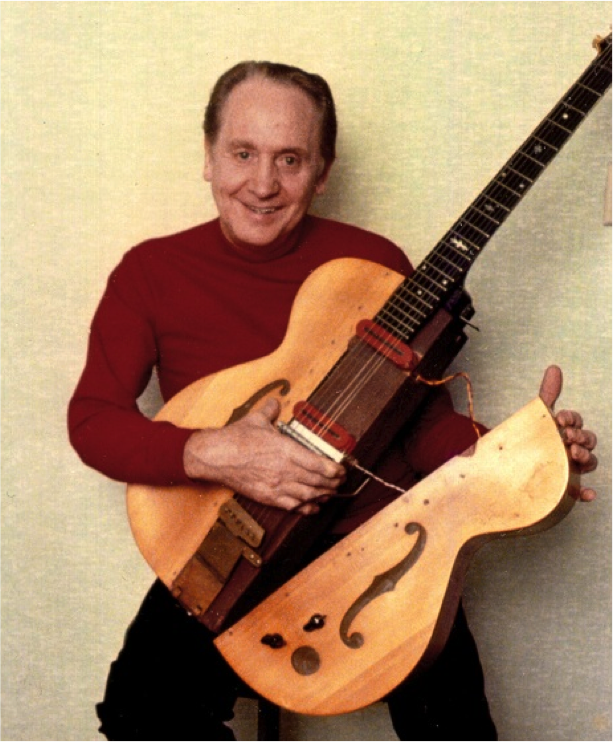
In addition, most Epiphone Hollowbodies had a screwed plate on the back, through which the electronics could be reached quickly and easily. This special feature also aroused the interest of a certain new talent named Lester Polsfuss in the 1940s, who would later become the inventor and namesake of the Gibson Les Paul.
At the time, however, Lester was not known as a legendary guitar designer, but as a talented, young musician. But of course Les already had a lot of innovative ideas back then, which he was allowed to live out in the Epiphone factory in New York. Here, for example, the famous “The Log” electric guitar was created, the first prototype for later Solid Body models. Since Les ‘creation was aesthetically but not really appealing, he decided to disguise it as an Epiphone guitar.
The innovative concept caused a sensation across the United States, which in turn benefited Epiphone. Lester, along with other famous artists of the time, ensured the continued success of Epiphone.
Epi’s death and the consequences for Epiphone
During the Second World War (June 6, 1943) Epaminondas died of leukemia. As a result, his two little brothers, Orphie and Frixo, took over the company. And after the end of the war everything seemed to go on as before. The clientele continued to grow, as did the competition between Epiphone and Gibson. During this time, the focus was primarily on the further development of the pickups and electronics. In addition, Epiphone introduced their first cutaway models in 1948 in response to the Gibson L-5CES with cutaway.
However, problems arose over time. In 1953, family disputes as well as financial problems finally prompted Orphie to surrender distribution rights to Continental. As a result, Epiphone production was relocated from New York to Philadelphia that same year. This step was strictly rejected by many old employees, which resulted in countless layoffs. Incidentally, many of the former employees worked at Guild afterwards, but only briefly. The resulting shortage of skilled workers meant that the quality of Epiphone guitars deteriorated significantly. In addition, the company has had a bad image since Epi’s death, as he was known not only as a talented instrument maker, but also as a personable and sociable contemporary.
Epiphone’s last attempt to regain its old size was the Harry Volpe Signature model introduced in 1955. And although Volpe was one of the most famous guitarists of the time, and apparently some of his signature models were also sold, the help came too late. Gibson’s new signature artist was probably also to blame for this: The aforementioned Les Paul, whose first Gibson signature guitar came on the market as early as 1952.
The takeover by Gibson and new success
In 1957, Gibson finally took over Epiphone. However, back then it wasn’t about guitars at all, but much more about double basses. Gibson stopped producing their double basses after World War II, but Epiphone did not. With the purchase, Gibson, or much more the Chicago Musical Instrument Co., to which Gibson was then part, hoped to revive the bass business.
The Gibson CEO at the time, Ted McCarty, was responsible for the takeover. Interestingly, he was not only the CEO of Gibson, but also significantly involved in the design of most Gibson models from Les Paul to ES-335 to Firebird, Explorer and Flying V. In addition, years later he would become the mentor of a certain Paul Reed Smith, and so immortalize his name on a guitar model forever.
Unexpectedly, the Gibson employees found various guitar parts in the Epiphone factory in Philadelphia after the contract was signed. This stroke of luck in turn inspired Ted McCarty to revive Epiphone’s stagnant guitar production. At first, McCarty’s plan was to build the old Epis just like they used to. However, many forms were missing for this, which is why a completely new line of guitars was finally created.
While many of the first guitar models were strongly reminiscent of Gibson guitars, the Epiphone guitars quickly developed their own identity again. Gibson used the Epiphone brand, for example, to test new concepts and implement some of the crazier ideas. The best example of the creativity of the time is probably the Epiphone „Professional Electric“. With this combination of amp and guitar, the built-in effects of the amp can be controlled with the help of potentiometers on the pickguard.
New Epiphone models in the USA
At the NAMM 1958 the first new Epiphone guitars were finally presented. Gibson made drastic changes in the Epiphone line-up from the very beginning. Instead of large jazz guitars, the focus was now on thin semi-hollow bodies and solid body guitars. And since the focus was now much more on electrically amplifiable instruments, corresponding amps were of course not missing. However, Gibson were significantly less creative here: The amps were identical to Gibson’s own amplifiers of the time.
In addition, the new models included some new acoustic guitars that were strongly based on the models from Martin Guitars. Some of the original archtop guitars continued to be produced, but took a back seat. And the double basses also quickly lost their importance for various reasons. Their production was stopped at the beginning of the 1960s.
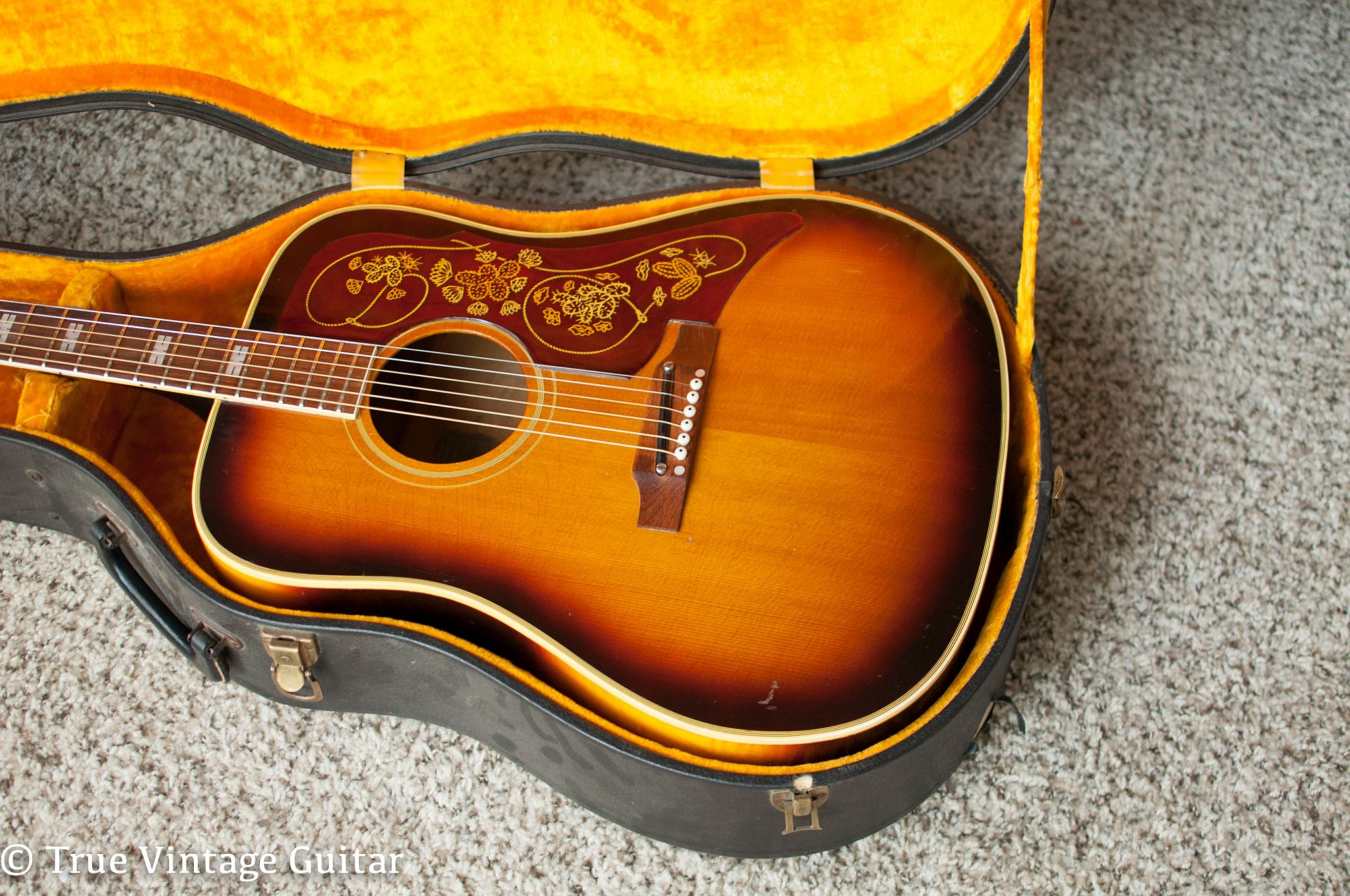
Incidentally, some of the models introduced in 1958 are still (or again) for sale today. The best-known model from this period is the Epiphone Sheraton *, an interpretation of the Gibson ES-335, also presented in 1958. Another guitar from 1958 that has only recently been restored is the Epiphone Century *. However, Epiphone are based on a somewhat younger model from 1966, which was made famous primarily by James Bay.
The Beatles, Rock’n’Roll and Epiphone
Over the next few years, Epiphone slowly but steadily increased sales. In 1965, guitars made up 20% of Gibson’s total sales. Even though the Sheraton, for example, was only $ 20 less than the Gibson ES-335 at the time. Other Epiphone models were even more expensive than their Gibson equivalents. Even in the early 60s, Epis was not yet considered a cheap Gibson alternative.
Responsible for the commercial success of Epiphone guitars, as well as electric guitars in general, was primarily rock’n’roll. In addition to countless other artists, the Beatles and the Rolling Stones, among others, were regularly seen and photographed with epis. For example, Paul McCartney recorded Yesterday on an Epiphone Texan. And John’s legendary Blonde Epiphone Casino * is still strongly associated with the Beatles today.
When Epiphone started Outsourcing its production to Asia
The euphoria of the early 1960s did not last long, however. In the second half of the 1960s, more and more guitars came to the United States from Japan. And since these looked almost like the expensive originals, but were much cheaper at the same time, more and more guitarists decided against the previously popular Gibsons and Epis, which is why a whopping 86% fewer Epiphone guitars were sold in 1969 than four years earlier.
To save both companies, the new owners of Gibson decided to relocate the production of Epiphone guitars to Japan. Since the Epis had always generated less sales than the Gibsons in previous years, this was the only logical step.
Despite vehement resistance on the part of Epiphones, the first Japanese Epis were presented in December 1969. The 13 new models were simply renamed guitars from the Matsumoko company. However, the same guitars could already be bought in the USA under the label „Lyle“. So, like in 1958, the Epiphone guitars lost their identity again. Again the guitars were more reminiscent of Martin and Fender models than of the popular Epiphone classics.
Although the cheapest epis were already available for $ 79.50 (around $ 500 or € 400 today), there was still no interest. Therefore, in the following years, the owners developed new models that were supposed to bring back the old Epiphone charm. Fortunately, this concept proved to be effective and the Epis generated more sales again. And as the strategy proved effective, more and more attention was paid to the design of the Japanese guitars.
At this point I would like to briefly refer to a special delicacy from 1976: The Epiphone Scroll series. I personally liked the unusual guitar shape at first sight. I only mention that in case someone wants to give one away or something …
Epiphonic Path to Modernity: Dave Berryman and Jim Rosenberg
Similar to Gibson, Epiphone suffered badly from the Norlin Company in the 70s and 80s. During this time, the product line-up changed almost as often as the Norlin board of directors. In 1983 production was relocated again for cost reasons – this time to the Samick factory in Korea.
The supposed redemption finally came in 1986 with the takeover of Gibson by Henry Juszkiewicz, Dave Berryman and Gary Zebrowski. However, Epiphone were again severely run down at this point. In addition, the brand – once again – lacked an enormous image. Therefore, the new owners originally had no plans at all for the subsidiary. Nonetheless, with a few lucky sticks, they managed to increase sales of the Epis tenfold in just five years. And that, although Epiphone was actually still not in the focus and did not even have its own management until the 90s.
This changed suddenly with Jim Rosenberg’s arrival in 1992. And a year later Dave Berryman decided to concentrate his attention exclusively on the Epiphone guitars.
It is mainly thanks to Rosenberg’s passionate devotion that Epiphone rose to new fame. Together with Berryman, he managed within the next two years to completely change the opinion of both customers and dealers regarding Asian guitars. And since the mid-1990s, Epiphone customers have finally seen more than just a Gibson subsidiary again!
Epiphone Today – Present History
And this trend has, more or less consistently, prevailed to this day. Of course, Epiphone continue to offer Les Pauls, SGs and other Gibson models at low import prices. At the same time, there is also an ever larger line-up of various own models that are more based on old Epis than old Gibsons. The best example of this are the relatively new Masterbilt acoustic guitars, which look confusingly similar to the first successful Epi acoustic guitars. In addition, thanks to the legendary Dr. Epiphone (Will Jones) is finally someone again today who represents the brand to the outside world like Epi did before.
Although this text is now much longer than planned, I only touched on the story behind the Epiphone guitars. If after this short 2600 word introduction you still haven’t had enough of the exciting history of guitars, I recommend Walter Carter’s book „Epiphone: The Complete History“.
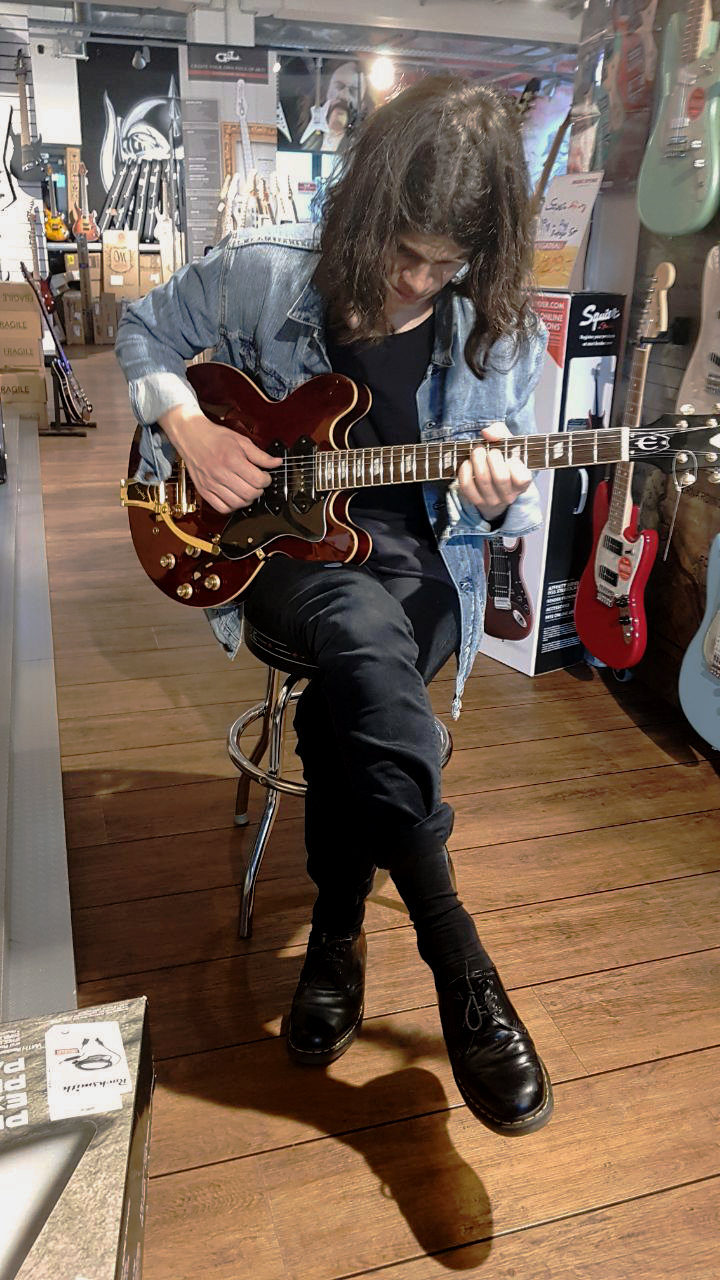
* This article contains so-called Affiliate links to one of our partners. If you buy the linked product in their shop, we will receive a small commission for it, which helps us to finance the operation of Legendary-Guitars.com.

